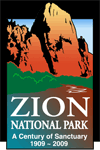Each kind of bird has a name for its gathering.
Geese have "gaggles," seagulls "flocks."
Ravens come in "unkindnesses." Until now I
did not fully understand the meaning of
the term. I swear they were scowling at me.
from: The Animal Dialogues
by: Craig Childs
This book Im reading...
The Animal Dialogues...
FABULOUS!!
If I dared...I'd share something from every chapter with you!!!
but instead..I'll just tantalize you with some of what I found fascinating from my reading last night.
Craig Childs loves the desert even more than I...and hes a patient and mindful observer of all that surrounds him out there in the wild. Plus he's an excellent writer!!!
He's a little nuts though...
for he chooses to live in tipi's on the Colorado tundra...for years at a time...even through the winters!! Or he hikes for hundreds of miles through Mexico, just for the adventure. I think he prefers the company of critters and quiet than he does civilaztion.
so I guess the resemblance between us begins and ends with our love of the desert and for the inhabitants there of.
It turns out that Craig is as intrigued by ravens as I am.
I have alway sensed that the ravens I see in the sky or that are perched above our heads on the rocks watching us closely...are a unique and singular bird. We hike.. and then realize that we are in 'their space' ...and they watch...
I feel sure that there's more to them than just those huge bills and blackness beyond description. And those beady eyes that miss nothing!!! gulp
Craig describes them eloquently!!
May I share a few excerpts?
"I am always prepared for the impossible from ravens. Animals of omens and nevermores, they rule the desert, able to reach every crack and ledge while I am restricted to the ground as if wearing chains.
Of all bird species, Corvus corax
, the raven, is considered the most ingenious. In one experiment with ravens it was soundly demonstrated that they have the ability to follow another's gaze- e.g., you glance at a peanut with interest, and a raven turns to see what you're looking at. This is a skill documented among only the smartest animals, especially those with tight social networks like wolves and primates."
Remember Alfred Hitchcocks'-- The Birds!!!!??? Can you say
Creepy!!!!
" Ravens are the largest of the corvids, a group of birds whose behavior tops the avian IQ test. This is based on the number of novel feeding behaviors any bird species exhibits, derived from two thousand observations in the wild published over seventy-five years. Corvids--magpies, crows, jays, and raven--employ more adaptations and innovations than any other bird. Ravens pull up baited fishing lines by stepping on the line, reeling in slack with their beaks, stepping on the line again, and finally pulling in the fish. They poke sticks into bug holes, bend wire to hook meat from between cracks, unzip backpacks, and open ice chests."
Are you exclaiming outloud, like I did, that this cant be so?? Are you shocked and amazed?? I'll bet that now when you spy a raven flying overhead...you'll never "see" them in the same light again.
"Down to their every gesture, ravens are rich with character, more so than most people. Their sentiments are not disguised. They are theatrical birds. Even quietly perched on a church roof of under the arm of a bridge, ravens are obviously brooding, grumbling among one another, plotting the end of the world."
Dont look now...but there's a raven out there watching YOU!!!
See!!! Gathering coral dust between ones toes is
always enlightening and now maybe sometime unnerving as well !!!!






























